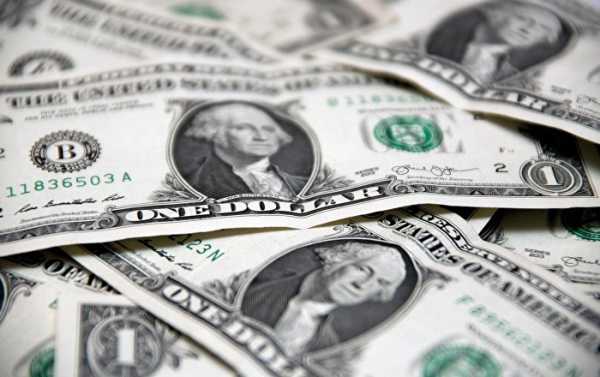
The US economy slowed down in the fourth quarter as imports suddenly skyrocketed a stunning 13.9 percent – outpacing the surging exports almost twofold, and slicing some 1.1 percent off the overall GDP reading.
Kristian Rouz — The Commerce Department reported Friday that US economic growth slowed to an annualized 2.6 percent last quarter, compared to an expansion of 3.2 percent in Q3, and 3.1 percent in Q2. Overall GDP expansion for 2017 — President Trump’s first year in office — came in at 2.3 percent.
The slowdown was unexpected, as a post-hurricane recovery in Texas and Florida, as well as a Christmas holiday shopping spree and an increased private-sector investment over the past year were supposed to have lifted the overall GDP even higher than Q3’s 3.2 percent.
Earlier, expectations were that the economy would expand by 3 percent in Q4, and the actual report could exceed expectations, pointing to a growth more in line with the previous quarters.
A massive increase in imports slashed percentage points off the Q4 GDP reading. Imports in the US skyrocketed by 13.9 percent during the October-December period alone, their fastest since 2010, erasing the positive effects of the rise in US exports.
This surge in imports slashed 1.1 percent off the Q4 GDP reading. This happened due to the dollar’s strength and importers’ hurried activity to deliver more goods to the US ahead of President Trump’s looming crackdown on unfair trade practices.
The disappointing GDP report might prompt the Federal Reserve to delay its further interest rate hikes.
However, experts believe the economy will gain momentum this year.
“We expect the strong momentum in business fixed investment to continue into 2018 as strong global growth, a weaker US dollar, low borrowing cost and reduced tax burdens following the Tax Cuts and Jobs Act support activity,” Gregory Daco of Oxford Economics observed.
Almost every sector of the US economy posted a solid improvement last quarter. Household spending and domestic consumption were the key driver of the growth in Q4, with consumer spending expanding 3.8 percent — mainly due to the Thanksgiving and Christmas holidays.
Consumer purchasing power was supported by an increase in salaries and wages, as well as by the stock market hitting one record high after another.
Government investment also increased to 3 percent year-to-year in Q4, mainly due to the rebuilding efforts in Texas and Florida. Fixed investments rose 7.9 percent.
Whilst the Federal Reserve is currently expecting GDP growth to average at 2.5 percent by the end of this year, the new Fed Chair Jerome Powell is expected to raise interest rates in March. This comes as monetary policymakers believe economic expansion will gain momentum due to tax reform and increased business activity.
Some forecasts are more optimistic than others.
“We continue to forecast 3 per cent full-year growth for 2018,” James Knightley of the Dutch multinational banking group, ING, said. “Strong domestic momentum will be boosted somewhat by tax cuts, while dollar softness puts the US in a great position to benefit from the global upturn in demand.”
President Trump is hoping to boost US economic growth to at least a 5-percent annualized expansion. This as the US economy — according to the data from the Bureau of Economic Analysis — grew by an average of 1 percent in the 1930s, 5.6 percent in the 1940s, 4.1 percent in the 1950s, 4.5 percent in the 1960s, just over 3 percent between 1970 and 2000, 1.8 percent in the 2000s, and by 2.1 percent in the current decade so far.
This means last year’s growth of 2.3 percent is somewhat above this decade’s average, and far above the previously expected 1.5 percent — but is still under the 3-percent mark President Trump had hoped for.
Now the White House is adamant about curbing the crippling imports, and promoting the short-term weakness of the US dollar — as described by Treasury Secretary Steven Mnuchin — in order to support US businesses and international competitiveness.
Sourse: sputniknews.com






